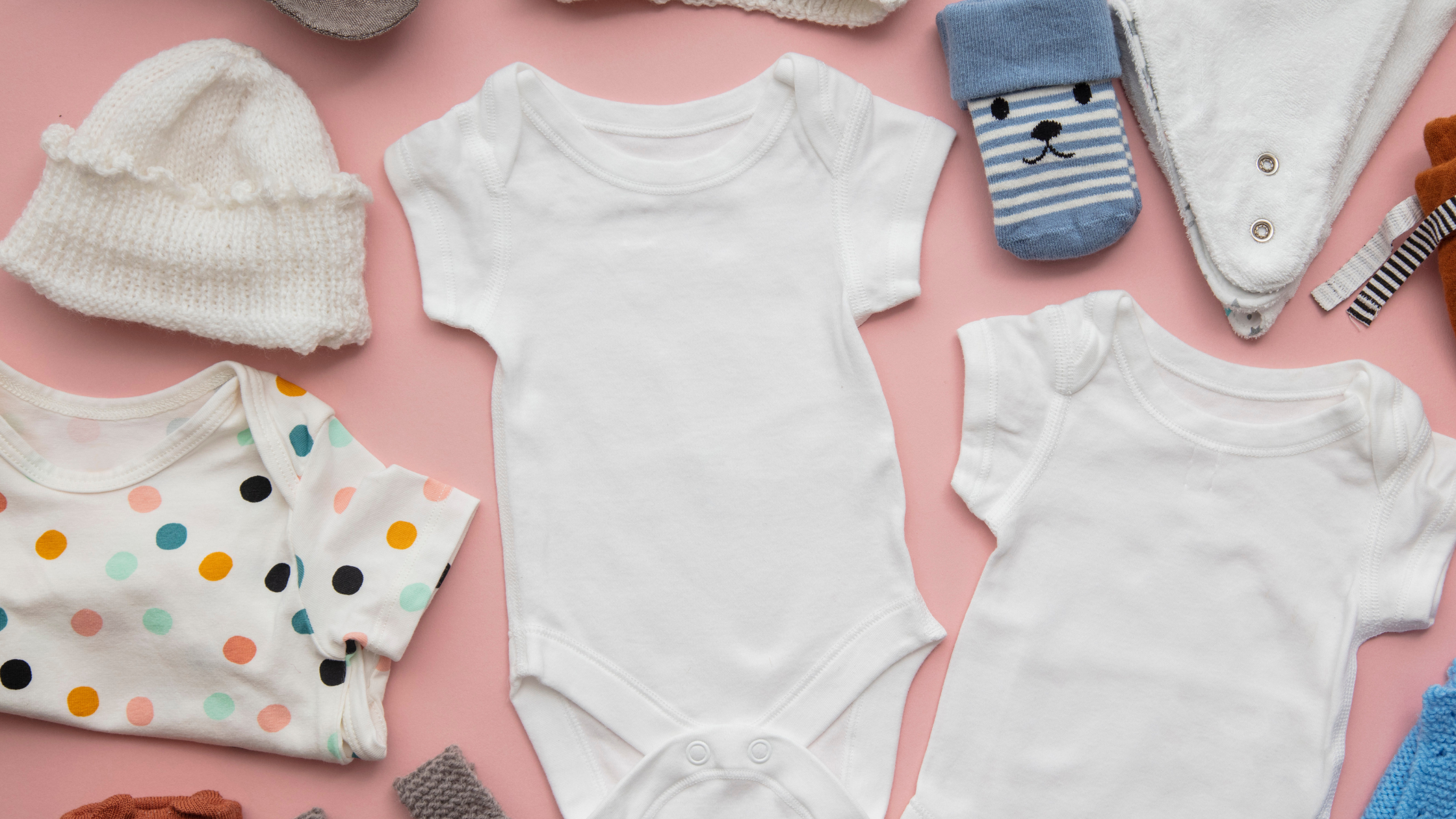Care Guide for Baby Clothes: How To Wash and Store
February 22, 2023
Baby clothes are adorable and often made from delicate fabrics that require special care to maintain their softness and quality. In this care guide, we'll explore the best practices for washing and storing baby clothes, so you can keep them looking great and feeling comfortable for your little one. Whether you're dealing with cotton, wool, or other materials, these tips will help you keep your baby's clothes clean, fresh, and in good condition. From wash to store, we'll cover everything you need to know to keep your baby's clothes looking their best.
WASH FREQUENCY
After every wear
STORAGE METHOD
Fold, Roll
The Right Way To Wash Baby Clothes
Washing Baby Clothes in the Washer
- Sort the baby clothes by color and fabric type. Separate light colors from dark colors and wash separately.
- Pre-treat any stains by applying a small amount of baby detergent or stain remover directly to the affected area. Rub gently with a soft brush or sponge.
- Place the baby clothes in a mesh bag to prevent tangling and wear during the wash cycle. You may also use a pillowcase if you don't have a mesh bag.
- Select a gentle cycle and use warm or cold water depending on the fabric type. Use warm water for white cotton items and cold water for colored items.
- Add the appropriate amount of baby detergent according to the package instructions. Use a mild detergent that is free of fragrances, dyes, and brighteners.
- Start the wash cycle and wait until it's finished.
- Remove the baby clothes from the washer and check for any remaining stains. If there are any, pre-treat them again and wash separately.
- Reshape the baby clothes if necessary and hang or lay them flat to air dry. You may also use the dryer on a low heat setting if the care label permits it, but air drying is recommended to prevent shrinkage and damage to the fabric.
- Fill a clean sink or basin with cool or warm water and add a small amount of baby detergent.
- Submerge the baby clothes in the water and gently scrub them with your hands to distribute the soap.
- Rinse the baby clothes thoroughly under running water to remove all the soap.
- Squeeze out the excess water gently and do not wring or twist the clothes, as this can cause stretching and damage to the fabric.
- Reshape the baby clothes if necessary.
- Hang or lay the baby clothes flat to air dry in a well-ventilated area. Do not use a clothes dryer, as the heat can shrink and damage the fabric.
If the care label on your baby clothes says "Dry Clean Only," take them to a professional dry cleaner. Do not attempt to wash them at home as it may damage the fabric, color, and overall quality of the clothing. Dry cleaning ensures that the baby clothes are properly cleaned and maintained, while keeping them safe and free from damage.
How Often To Wash Baby Clothes
Baby clothes can absorb spit-up, drool, and food, which can lead to unpleasant odors and potential skin irritation. They should be washed after every wear to maintain their appearance and prevent damage to the materials. Special care should be taken to use gentle and hypoallergenic detergents to avoid skin irritation for babies.

The Right Way To Store Baby Clothes
How to Fold Squarish Baby Clothes
- Lay the clothes on a flat surface, separating each piece.
- Fold each piece of clothing in half vertically.
- Then, fold each piece in half again horizontally.
- Stack the folded pieces in a drawer or on a shelf, making sure to keep like items together.
- Lay the bib flat with the front side down.
- Starting from the bottom, roll the bib up into a tight roll.
- Store the rolled bibs in a drawer or on a shelf.
- Lay the cloth diaper flat on a clean surface, with the front side facing down.
- Fold the sides in to create a rectangle shape.
- Fold the bottom of the diaper up to create a straight edge.
- Fold the top of the diaper down to meet the bottom edge.
- Smooth out any wrinkles or creases.
How to Roll Cloth Diapers
- Lay the cloth diaper flat on a clean surface, with the front side facing down.
- Roll the diaper tightly from the bottom up, smoothing out any wrinkles or creases as you go.
- Lay the onesie on a clean, flat surface with the front side facing down.
- Fold the sleeves towards the back, creating a straight line at the shoulders.
- Fold the onesie in half vertically, making sure the edges and seams line up.
- Fold the onesie in half again horizontally, tucking the sleeves and pant legs inside the folds.
- Smooth out any wrinkles or creases.
How to Roll Onesies
- Lay the onesie on a clean, flat surface with the front side facing down.
- Fold the sleeves towards the back, creating a straight line at the shoulders.
- Starting at the bottom of the onesie, roll it up tightly, making sure to smooth out any wrinkles or creases as you go.
Expert Advice for Maintaining The Quality Of Your Baby Clothes
To keep baby clothes in top shape, it's important to follow a few practical tips. First, avoid washing them with heavy or abrasive materials, such as towels or denim, which can cause damage or pilling to the fabric. Wash clothes with similar materials to reduce friction and protect the fabric. It's also important to secure any closures, such as zippers or velcro straps, to prevent snagging or damage to the fabric. Washing clothes inside out can also help protect the surface of the fabric, especially for printed or embroidered items. When washing new clothes, consider using salt as a mordant or dye-fixer to prevent color bleeding. Investing in mesh bags or a proper drying rack can help reduce wear and tear during the washing and drying process, especially for delicate items. It's recommended to air dry baby clothes whenever possible to prevent shrinkage or damage to the fabric. Following the care label instructions is crucial, so always refer to the manufacturer's recommendations for best results.
DISCLAIMER
Just a friendly reminder that this care guide for baby clothes only provides general advice. Your baby clothes may have specific care requirements based on its material, style, and manufacturer instructions, so always check the care label before washing or storing it. If you're unsure about anything, it's always best to consult a professional cleaner. Please note that the author of this guide is not responsible for any damages or losses resulting from the use or misuse of any information from this blog.
Want to share this?
